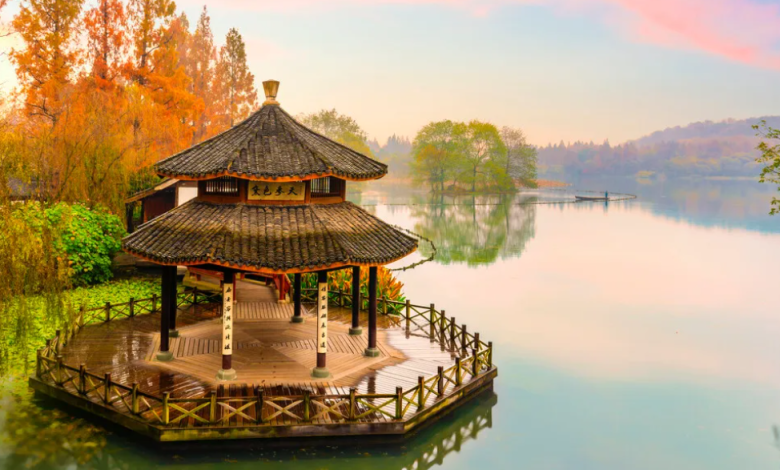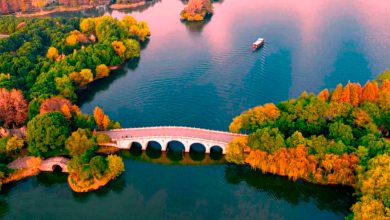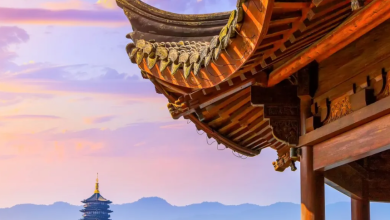
Hangzhou, a city where ancient traditions harmoniously blend with modern innovation, is a cultural treasure trove of China. From its poetic West Lake to its centuries-old tea ceremonies, Hangzhou’s heritage reflects China’s artistic, philosophical, and historical evolution. This article explores the city’s most enduring cultural elements.
1. The Poetic Legacy of West Lake
A. UNESCO World Heritage Site
- History: Celebrated in Chinese literature for over 1,000 years.
- Cultural Significance: Inspired poets like Su Shi (Su Dongpo), who compared it to “a beauty beyond compare.”
- Must-See Landmarks:
- Leifeng Pagoda – Linked to the Legend of the White Snake.
- Broken Bridge – Famous for its winter scenery.
B. Traditional West Lake Folklore
- The Legend of the White Snake (白蛇传): A tragic love story set around West Lake.
- Butterfly Lovers (梁祝): Often performed in local Yue Opera.
2. Hangzhou’s Tea Culture: The Art of Longjing Tea
A. Longjing (Dragon Well) Tea – A National Treasure
- History: Served to emperors since the Tang Dynasty (618–907 AD).
- Production: Hand-picked in Meijiawu and Longjing Village.
- Tea Ceremony Etiquette:
- Water Temperature: 80°C (176°F) to preserve flavor.
- Brewing Method: Glass cups to admire the leaves’ dance.
B. China National Tea Museum
📍 Location: Longjing Road
🖼️ Exhibits: Ancient tea utensils, interactive brewing demos.
3. Silk & Embroidery: Hangzhou’s Textile Mastery
A. Hangzhou Silk – Woven into History
- Silk Road Connection: Hangzhou was a key producer for trade routes.
- Modern Hub: Hangzhou Silk Market offers high-quality fabrics.
B. Zhejiang Embroidery (浙绣)
- Characteristics: Fine stitches, often depicting landscapes.
- Best Place to See It: Hangzhou Craft Museum.
4. Traditional Performing Arts
A. Yue Opera (越剧) – The Soul of Zhejiang
- Features: Soft melodies, elegant costumes.
- Where to Watch: Hangzhou Grand Theatre.
B. Pingtan (评弹) – Storytelling with Music
- Unique Trait: Combines singing, narration, and instrumental music.
5. Hangzhou’s Architectural Heritage
A. Hefang Street – A Living Museum
- Qing Dynasty Architecture: Herbal shops, calligraphy studios.
- Hidden Gem: Hu Qing Yu Tang Traditional Medicine Museum.
B. Lingyin Temple – Buddhist Artistry
- Rock Carvings: Over 470 Buddhist statues in Feilai Feng Grottoes.
6. Hangzhou’s Modern Cultural Scene
- Alibaba’s Influence: Blends tech with traditional culture (e.g., AI-powered tea ceremonies).
- Museums: Zhejiang Art Museum, Hangzhou Contemporary Art Gallery.
Final Thoughts
Hangzhou’s culture is a living tapestry of poetry, craftsmanship, and spirituality. Whether sipping Longjing tea where emperors once did or walking the same lakeside paths as ancient scholars, visitors connect with China’s timeless heritage.
Which aspect of Hangzhou’s culture fascinates you most? Share below!





